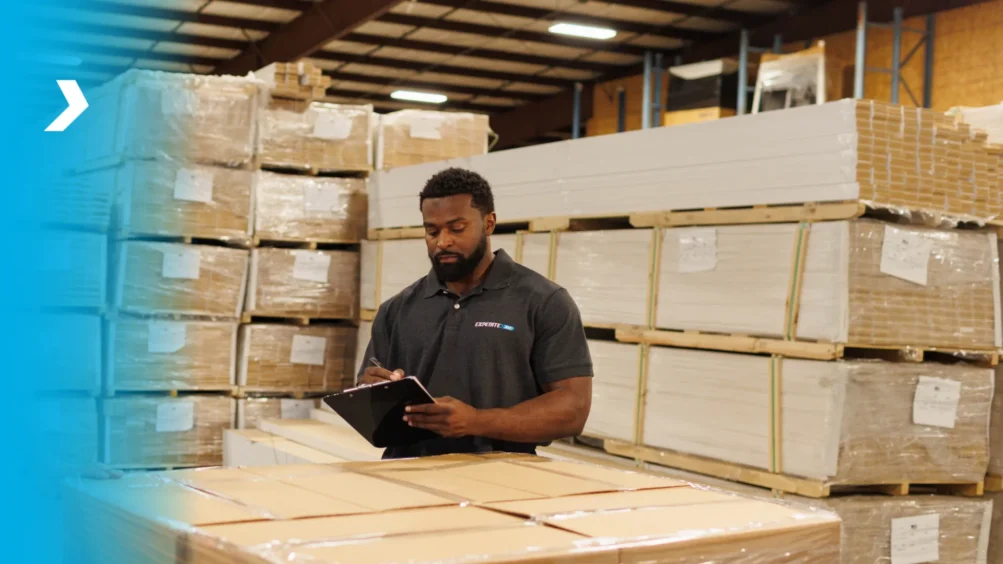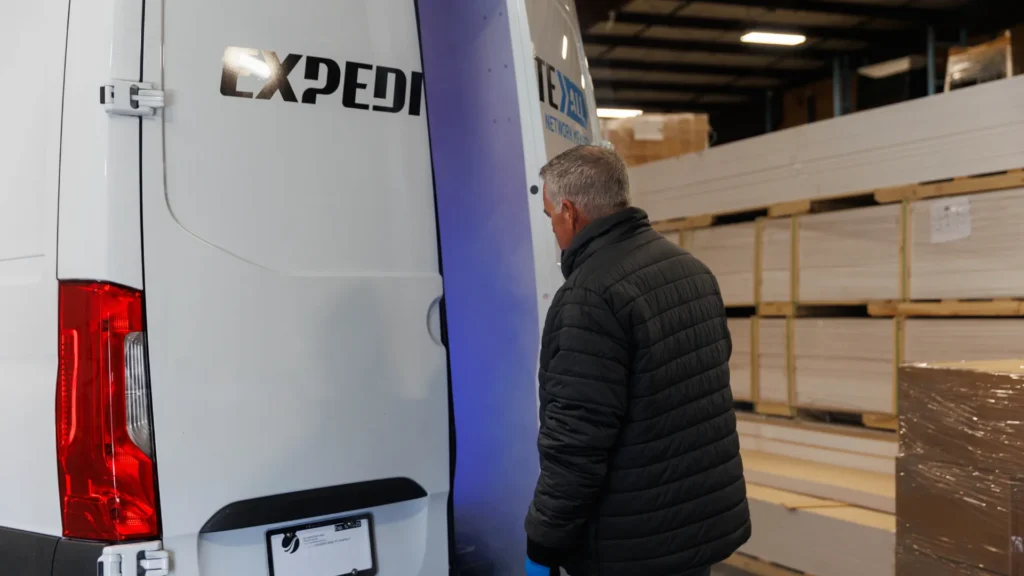
Can LTL Mode be Used for Small, High-Value Cargo?
Before the invention of STL(small truckload) services, shippers were on the horns of a dilemma, choosing between FTL(full truckload) and LTL(less than truckload) when shipping small, high-value, and often time-sensitive cargo. Both options can do the trick, but neither is the best. Thus, FTL offers exclusive use of the truck and careful handling, yet it is very costly, especially per-lb cost, and can be potentially accompanied by several road restrictions due to the size of the semi-truck and trailer combo. On the other hand, LTL is cost-effective yet is synonymous with multiple touchpoints and longer delivery times. Despite this, LTL has still been used by many shippers who, I guess, simply haven’t been familiar with STL’s benefits. Anyway, today, we’ll try to answer the question of whether LTL mode can be used for small, high-value cargo.
Understanding Small High-Value Cargo
Small, high-value cargo is distinct due to its compact size and significant worth. By default, these items require meticulous handling and extra security during transit to prevent damage and theft. They have a high price-to-weight ratio and are often sensitive to environmental conditions, such as temperature and humidity.
Industries that frequently ship small, high-value cargo include electronics, pharmaceuticals, and luxury goods. Electronics such as smartphones and laptops, for example, are valuable and delicate. Pharmaceutical shipments often consist of life-saving medications that must be kept at specific temperatures to remain effective. Luxury items, including jewelry and designer apparel, not only have high monetary value but also carry brand prestige, necessitating careful handling.
Small, high-value cargo requires higher security and delivery times. Delays can lead to significant financial losses, especially for perishable goods like pharmaceuticals. Furthermore, damage or loss of these items can impact a company’s reputation and result in customer dissatisfaction. These shipments must arrive safely and on time if you’re looking to meet customer expectations.
Choosing the right shipping method for small, high-value cargo involves balancing cost, security, and speed. LTL can be an option, but shippers must weigh its potential drawbacks, such as multiple touchpoints and longer transit times, against its cost benefits.
Common Use of LTL Mode for Small Cargo
Less-than-truckload shipping is a method where multiple shippers share space on the same truck. This allows for transporting smaller shipments that do not require a full truckload, optimizing both space and cost. LTL carriers consolidate shipments from various customers, making it a cost-effective solution for transporting goods.
One of the main reasons shippers opt for LTL is its affordability. By sharing truck space, shippers only pay for the portion of the truck their cargo occupies. This is particularly beneficial for small items where the shipment size does not justify the expense of FTL. Besides, LTL shipping can be more flexible in scheduling, accommodating frequent and smaller shipments without incurring high costs.
The typical LTL shipping process involves several steps. First, the cargo is picked up from the shipper and taken to a local terminal. Here, it is sorted and consolidated with other shipments heading to the same destination. The cargo then travels through a network of terminals and trucks until it reaches its final destination. This process involves multiple touchpoints, which means the cargo is handled several times during transit. While this can be efficient, it also increases the risk of damage or loss.
Handling in LTL mode requires careful planning and coordination. Cargo must be securely packaged to withstand multiple handlings and transfers. Shippers often use robust packaging materials and tracking systems to ensure the safety and security of their high-value items. Despite the potential risks, LTL remains a popular choice due to its cost savings and suitability for smaller shipments.
Risks of Using LTL Mode for High-Value Freight
Increased Handling
LTL shipping involves multiple transfers, which increases the risk of damage and mishandling. Each transfer is a potential point where items can be dropped, mishandled, or exposed to adverse conditions. For high-value freight, even minor mishandling can lead to significant financial losses and damage to the items.
Higher Theft Risk
High-value freight is an attractive target for thieves, especially during transfers between terminals. The increased exposure during these points makes LTL shipments more vulnerable to theft. Safety is not always guaranteed, even if adequate security measures are in place at each transfer point.
Delays and Unreliability
The coordination required for LTL shipping can lead to delays and unreliability. Scheduling issues, miscommunications, and unforeseen circumstances can impact delivery timelines. Delays can have significant financial implications, especially for time-sensitive high-value cargo.
Inadequate Security Measures
Security measures in LTL shipping can vary widely between carriers and terminals. Inconsistent protocols can compromise the safety of high-value items. Shippers need to thoroughly vet their LTL carriers to ensure they utilize reliable security practices.
Insurance Limitations
Standard LTL insurance policies often do not cover the full value of high-value freight. Obtaining additional coverage can be complex and costly. Shippers must navigate these insurance challenges to protect their valuable items during transit.
Tracking and Visibility Challenges
LTL shipping presents challenges in tracking and visibility. Real-time updates may be limited, making it difficult for shippers to monitor the status of their shipments accurately. This lack of visibility can be particularly concerning for high-value items that require close monitoring.
Packaging Vulnerabilities
Robust packaging is essential in LTL shipping to protect items from damage. However, even with solid packaging, sensitive high-value items can still be vulnerable to damage during multiple handling points. Shippers have to invest in high-quality packaging materials and techniques to mitigate these risks.
Potential for Misrouting
Consolidation issues in LTL shipping can lead to misrouting, causing delays and additional costs. High-value freight is particularly susceptible to the negative impacts of misrouting, as delays can result in significant financial losses and poor customer experiences.
STL Mode as a Solution
Small Truckload mode is a shipping method designed for smaller shipments that do not require a full truck but still need more attention and care than what LTL can offer. Unlike LTL, where multiple shipments share space in a large truck, STL utilizes smaller trucks or vans dedicated to a single shipment. This significantly reduces the number of touchpoints, thereby minimizing the risk of damage and loss.
STL is particularly suitable for high-value cargo that needs to be shipped swiftly and securely. Industries such as electronics, pharmaceuticals, and luxury goods often benefit from STL, as it provides a balance between cost-effectiveness and the need for specialized handling and timely delivery.

Benefits of STL for High-Value Cargo
- Exclusive Use
The exclusive use of small trucks or vans means that shipments experience significantly less handling, reducing the risk of damage and mishandling. Fewer transfers between vehicles and terminals translate to a safer and more secure journey for valuable items.
- Enhanced Security Measures
Logistics providers offering STL services implement rigorous security protocols, including tamper-evident seals, GPS tracking, and security escorts. These measures ensure that high-value cargo is protected from theft and tampering throughout the transit process.
- Greater Control and Reliability
With no other shipments sharing space and minimum stops along the way, STL shipments are less likely to experience delays. Shipments always arrive on schedule and in excellent condition.
- Improved Tracking and Visibility
STL carriers utilize advanced tracking systems to provide real-time updates on the location and status of shipments. For shippers, this means the ability to monitor their cargo closely and address any issues promptly.
- Fast and Timely Deliveries
The streamlined nature of STL shipping, with its direct routes and fewer stops, ensures that high-value shipments reach their destinations quickly. This speed often transforms into a winning advantage, putting your business ahead of the competition.
Choosing the Right Logistics Partner
Your logistics partner can either significantly enhance the security, efficiency, and reliability of your shipments or ruin them altogether. Therefore, it’s essential to carefully evaluate potential logistics providers to ensure they meet your specific needs and standards.
When choosing a logistics partner, consider several key factors. First, assess their security measures. A reputable provider should have strong safety protocols in place to protect your cargo from theft and damage. This includes tamper-evident seals, secure facilities, and trained personnel. Next, examine their tracking capabilities. Advanced tracking systems that offer real-time updates can provide peace of mind and allow you to monitor your shipment throughout its journey. Lastly, review their insurance options. Ensure that the provider offers comprehensive coverage that can fully protect the value of your high-value cargo.
At Expedite All, we pride ourselves on leading high-value shipments using STL services. We prioritize the safety of your cargo with rigorous security measures, including GPS tracking and strict security protocols. Our enhanced tracking capabilities allow for real-time monitoring, ensuring you always know the status and location of your shipment. In addition, we offer flexible and comprehensive insurance options tailored to protect high-value goods, providing an added layer of security and peace of mind.
Conclusion
Shipping high-value freight using LTL presents several risks, including increased handling, higher theft potential, delays, inadequate security, insurance limitations, tracking challenges, and packaging vulnerabilities. These risks can potentially lead to significant financial losses and compromised shipment integrity.
Unlike LTL, STL mode offers a safer and more reliable alternative. With exclusive use of small trucks, enhanced security measures, greater control, improved tracking, and timely deliveries, STL appears an ideal solution for high-value cargo.
As a recognized leader in STL logistics, Expedite All guarantees your valuable shipments are handled with ultimate care and delivered securely no matter the distance. We encourage you to explore our STL solutions for your high-value shipments. Our team is dedicated to providing customized logistics solutions tailored to your specific needs.
For more information about our STL services, contact us today!
You May Be Interested In
Efficient Freight Movement in Congested Areas: Small Trucks as a Smart Solution
American Transportation Research Institute’s (ATRI) congestion cost study uncovers the substantial impact of traffic congestion on the industry, with a shocking $94.6 billion financial effect. This is due to 1.27 billion hours of delays, equivalent to over 460,000 truck drivers being idle for a year…
Loadboards vs. Closed-Loop Network: Unpredictability vs. Peace of Mind
Reliability is a cornerstone of today’s logistics. Businesses depend on timely deliveries to keep production lines moving and customers satisfied with products and services. They continually seek out dependable transportation options, often turning to public loadboards for a quick solution, but instead, get nothing but significant risks. What Are Loadboards? At their core, loadboards are […]